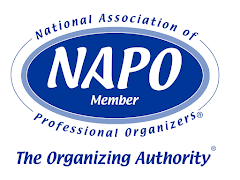One of the hardest parts of time management is learning how
to set priorities. Sometimes it can feel like every last thing you need to do
is an emergency. But the truth is, there are ways to organize your time and
manage the tasks that you need to do so that you get them finished right when
they need to be done without feeling overwhelmed or rushed.
Thankfully Stephen Covey’s time management grid is here to
save us from ourselves. It looks like this:
Use the grid to help create your daily to-do list by prioritizing the importance and urgency of each item you have to pick from. It can be as simple as doing the purple things first, then the green, next pink, and finally the light green items. But, if you do it this way you might miss out on something important you can learn from the time management grid.
Use the grid to help create your daily to-do list by prioritizing the importance and urgency of each item you have to pick from. It can be as simple as doing the purple things first, then the green, next pink, and finally the light green items. But, if you do it this way you might miss out on something important you can learn from the time management grid.
Eliminate Urgency from
Your Life
By focusing on green you can eventually lessen the purple
items on your list. By learning to say no to others you can virtually eliminate
the pink things, too. Finally, by getting your schedule under control the light
green will eliminate itself because you won’t feel the need to procrastinate
anymore.
Learn to Say No
As children we are taught to not say no. Unfortunately, this
transfers over to adulthood in a bad way, especially for females. If you
determine something is in the pink or light green area, you can use that to
determine whether or not you should say no. If it’s something that your client
wants that takes five minutes, but it’s not that important, you can do it. If
it’s something you just like to do, you can always do it after you’ve done
three purple or green tasks.
Assess Your Time Expenditures Now
Now that you have Dr. Covey’s time management chart, you can
go back and re-evaluate the things you are currently doing each day to find out
what color they are. Knowing their color will help you label each thing that
you do throughout the days, weeks and months ahead so that you can prioritize
them.
Finally, when you are assessing any task, make sure you
label it, then ask yourself if it fits in with your core values and goals. If
it does, it’s going to be in either the purple square or the green square. If
it doesn’t, it’s probably in one of the other squares. As you learn to use this
system it will start becoming more automatic so that you can say yes or no
faster and put your time management on auto drive.
Less Clutter = Less Stress SM in your home, your
business and your life
Organizational
Consulting Services





